
While he is mostly thought of for extremely cynical movies—even supremely cynical comedies—there was indeed a softer side to master filmmaker Billy Wilder. That’s really not surprising when you consider he was a disciple of Ernst Lubitsch—to the extent of having a sign in his office that read, “How would Lubitsch do it?” Though that not unreasonable ethic colored most of his work, Wilder only did a handful of movies in a style that could be called Lubitschian—though in a way that was still clearly his own. The most notable of these—and the most successfully—were Sabrina (1954) and Love in the Afternoon (1957), both of which starred the luminous Audrey Hepburn. Of the two, I lean toward Sabrina—not in the least because it was made for Paramount and has that distinctive shimmering, sophisticated Paramount look, a look that also graced most of Lubitsch’s best work.
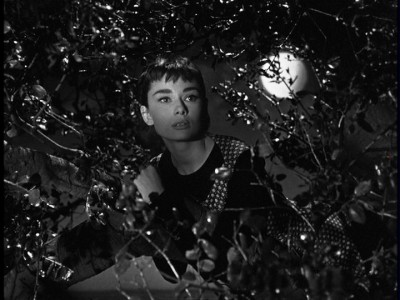
The film—written by Wilder, Samuel Taylor and Ernest Lehman—was adapted from Taylor’s play, but there’s nothing remotely stagebound about the results. It’s a perfect soufflé of a movie—or to borrow an apt phrase from Ian Anderson, it’s a “breath of champagne on a sparkling night.” Straight away, Wilder makes the film his own by opening on his frequent device of a narration—in this case, a slightly satirical fairy tale one about life on the Long Island Larrabee estate, delivered by Sabrina (Audrey Hepburn) herself. The tone is light and that of a young woman, though not an oblivious one. Sabrina may be—indeed she is—enamoured of the younger Larrabee son, David (William Holden), but she recognizes that he’s at the very least irresponsible. She also likes the glossy fairy tale of the whole upper class setting, but she knows it’s a fantasy of the over-privileged. The glamour is pure Paramount—right down to the employment of the studio’s most used song, “Isn’t It Romantic?”
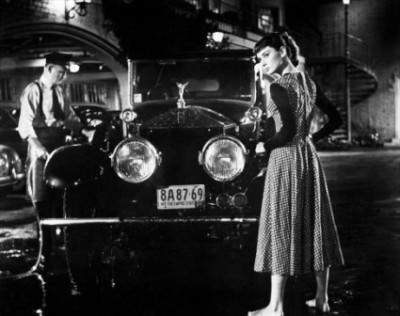
The crux of the story is that Sabrina—whose father, Fairchild (John Williams) the family chaffeur, is packing her off to cooking school in Paris—is resolutely in love with Davd. She’s so stuck on him that his romancing of a giggling socialite convinces her to theatrically commit suicide—complete with a note that states that David oughtn’t be invited to the funeral (“He probably wouldn’t even cry”). Her suicide bid—carbon monoxide poisoning in a closed garage, but with one window open for fresh air, with all eight Larrabee cars fuming away is thwarted by the arrival of elder Larrabee son, Linus (Humphrey Bogart), meaning that she’s off to cooking school in morning after all.
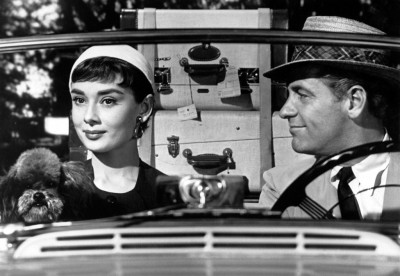
After an amusing stint at cooking school (with Paris economically conveyed by the Eiffel Tower—always visible from any window in Hollywood movies), Sabrina returns home—no longer a gawky girl, but still in love with David who doesn’t recognize her. She has no trouble at all—in this sophisticated incarnation—bewitching him, but before anything can happen, David falls victim to a silly accident that renders him immobile. (Note: if you must carry champagne glasses in you back pockets, don’t forget about them and sit down.) While he’s recuperating, it falls to Linus to keep her amused—despite their age differences. How this works out is probably apparent to everyone who has seen more than a dozen movies. But it’s the way it’s handled that rings the gong. It’s funny, glossy, and, yes, romantic in a manner that seems so effortless that it actually feels believable.
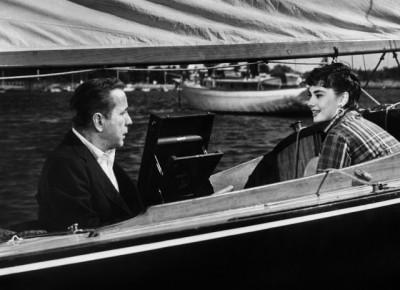
There’s long been a tendency to make an issue out of the disparity in the ages of Hepburn and Bogart (and Bogart definitely shows his years). This would crop up again when Wilder teamed her with Gary Cooper in Love in the Afternoon. But the truth is that all of the best remembered of Hepburn’s films paired her with a much older man, starting with her big break opposite Gregory Peck in Roman Holiday (1953), carrying through to Bogie in this, to Cooper in Love in the Afternoon, to Fred Astaire in Funny Face (1957), and to Cary Grant in Charade (1963). Why? My guess is that she seemed too special to be effectively paired with the young actors of her era—she needed screen icons to play against. Plus, these pairings don’t feel wrong somehow—at least to me. I saw them all before I was old enough to worry about such matterrs, and that may have bearing on why I just shrug them off, but I can’t honestly imagine anyone but Bogart as Linus Larrabee. In any case, the film remains a pure delight.
The Asheville Film Society’s Big Screen Budget Series will show Sabrina Wed., Nov. 20, at 7:30 p.m. in one of the downstairs theaters at The Carolina Asheville. Admission is $5 for AFS members and $7 for the general public.



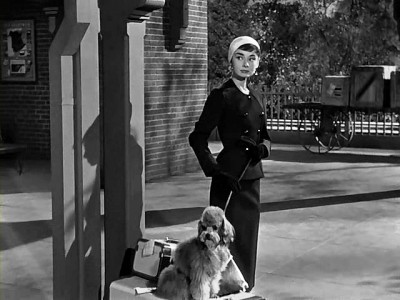
Before you comment
The comments section is here to provide a platform for civil dialogue on the issues we face together as a local community. Xpress is committed to offering this platform for all voices, but when the tone of the discussion gets nasty or strays off topic, we believe many people choose not to participate. Xpress editors are determined to moderate comments to ensure a constructive interchange is maintained. All comments judged not to be in keeping with the spirit of civil discourse will be removed and repeat violators will be banned. See here for our terms of service. Thank you for being part of this effort to promote respectful discussion.